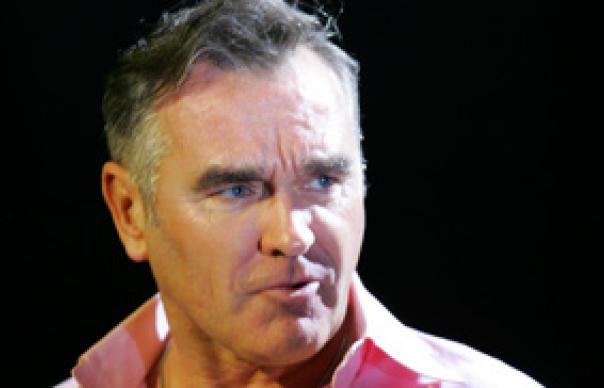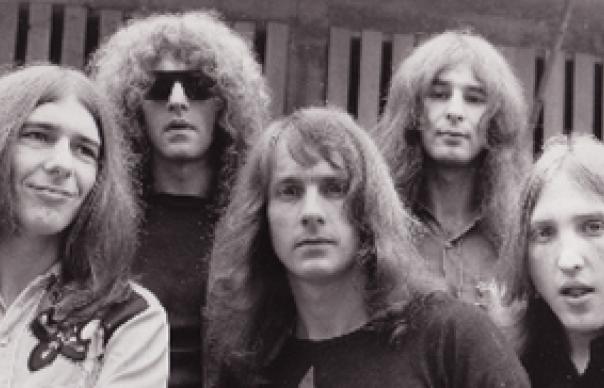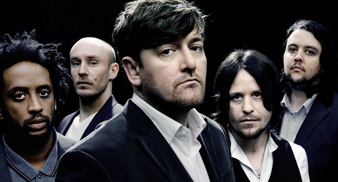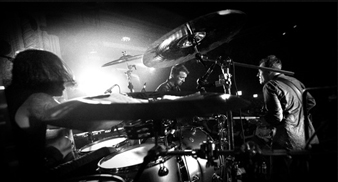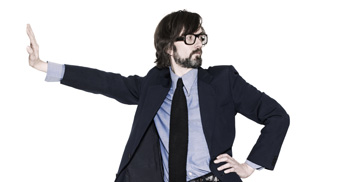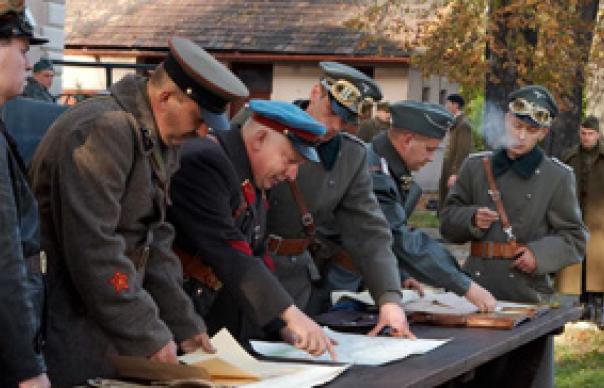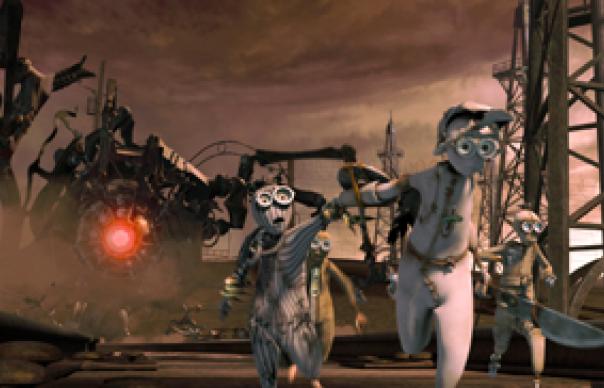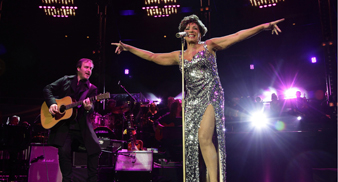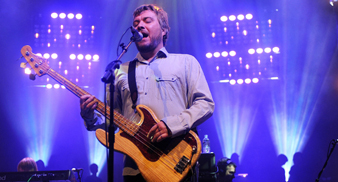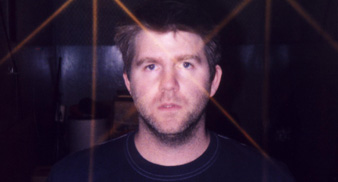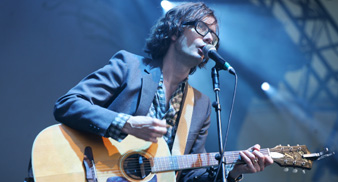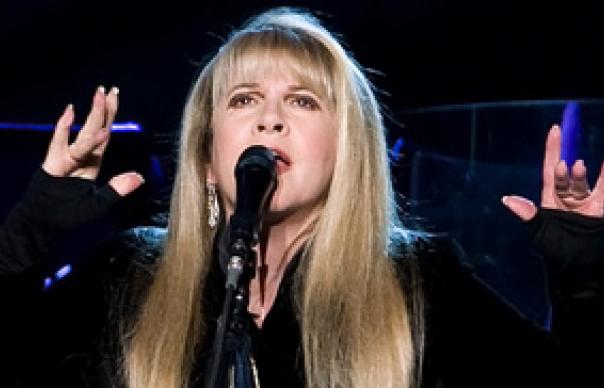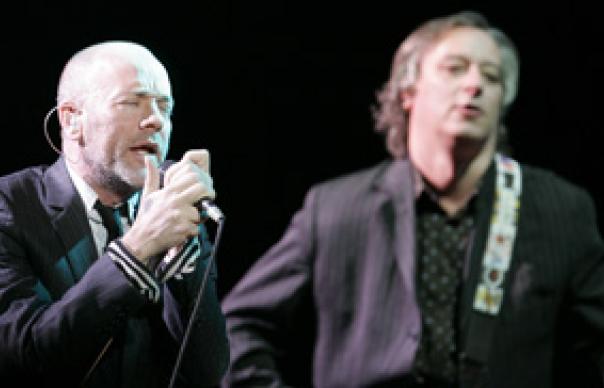“It’s not U2 creating this great art – that’s why I can be so seemingly arrogant about what we do,” declares The Edge, over footage of him picking out an African motif on a guitar that is, presumably, plugged directly into God’s mainframe. “I believe the songs are already written,” Bono chimes in, “and the less you get in the way of them the better.” This outpouring of false modesty, from the making-of documentary accompanying The Unforgettable Fire’s 25th anniversary reissue, will do little to alter the prevailing opinion that U2’s fourth album is where their sense of self-importance went supernova. Emboldened by “Sunday Bloody Sunday”, Bono now appeared to believe that world peace was within his grasp; it’s hard not to feel that the act of dedicating songs to Martin Luther King or Hiroshima survivors was partly intended to confer nobility on their author. In U2’s defence, these were idealistic times. 1984 was the year of Band Aid, “Free Nelson Mandela” and benefit gigs for striking miners. There was a conviction that rock music could play a part in changing the world for the better. On The Unforgettable Fire, U2’s music strove, often majestically, to match this conviction. With the encouragement of Brian Eno, piloting his first major album project since Talking Heads’ Remain In Light, U2 cast off their foursquare shackles and clambered inside the music. The Edge’s delay unit ceased to be a mere effect and became an instrument in itself, defining the entire rhythm and texture of songs such as “Pride” and “The Unforgettable Fire”: muscular anthems lifted into a higher realm thanks to the enveloping ambience. Their unapologetic, chest-beating hugeness would be laughed out of town in 2009, even by Muse, but you’re guiltily glad U2 were able to contemplate rock songs of this magnitude before the practice became taboo. Elsewhere, Eno encouraged the band to pluck songs from the ether; the likes of “4th Of July” and “Promenade” are built on little more than ripples and echoes. His “scenographic” approach even rubbed off on Bono’s lyrics – despite the weighty, portentous song titles, much of the imagery is pleasingly impressionistic. On the other hand, Eno’s indulgence allowed U2 to patent a kind of windy bombast – evidenced on “MLK” and “Bad” – that they peddle to this day. From the disc of bonus material, “Bass Trap” and “Boomerang” (I & II) are embryonic jams that were deemed too dubby for further refinement. “11 O’Clock Tick Tock” is punchy and fierce, but belongs to an earlier, angrier U2. Meanwhile, it’s difficult to know what they expected to discover by revisiting “Disappearing Act” this year (the lumpen outtake was finally completed during a recent pit-stop on the 360 tour), apart from that Bono’s voice is not the clarion call it was; the Cure-like “Yoshimi Blossom” – antsy, propulsive and slathered in E-bow feedback – might have been more deserving of a full vocal treatment. The African influence that peeped through on “A Sort Of Homecoming” is made explicit by Daniel Lanois’ exultant remix (featuring Peter Gabriel on vocal overdubs!) and U2’s finest b-side of the period, a song featuring The Edge’s aforementioned 'King Sunny Adé’ motif called “The Three Sunrises”. It’s another intriguing side-road that U2 never took. Eno says in the documentary that one of the blessings of working with U2 is that they were keenly aware of their own strengths and limitations. This reissue package reveals an eagerness to explore and evolve, but also confirms ideas were only followed through when they seemed to fit the masterplan. Nine months after the release of The Unforgettable Fire, U2 regaled Live Aid with a queasily amped-up 13-minute version of “Bad”, Bono practising his Messiah moves with the crowd and incorporating lines from various Stones songs to demonstrate exactly where he felt U2 now belonged in the scheme of things. The Unforgettable Fire stands as a fascinating document of a band on the cusp of something, their eyes opening wide to the world; tellingly, however, there were no experimental interludes on The Joshua Tree. SAM RICHARDS Latest and archive album reviews on Uncut.co.uk Latest music and film news on Uncut.co.uk
“It’s not U2 creating this great art – that’s why I can be so seemingly arrogant about what we do,” declares The Edge, over footage of him picking out an African motif on a guitar that is, presumably, plugged directly into God’s mainframe. “I believe the songs are already written,” Bono chimes in, “and the less you get in the way of them the better.”
This outpouring of false modesty, from the making-of documentary accompanying The Unforgettable Fire’s 25th anniversary reissue, will do little to alter the prevailing opinion that U2’s fourth album is where their sense of self-importance went supernova. Emboldened by “Sunday Bloody Sunday”, Bono now appeared to believe that world peace was within his grasp; it’s hard not to feel that the act of dedicating songs to Martin Luther King or Hiroshima survivors was partly intended to confer nobility on their author.
In U2’s defence, these were idealistic times. 1984 was the year of Band Aid, “Free Nelson Mandela” and benefit gigs for striking miners. There was a conviction that rock music could play a part in changing the world for the better. On The Unforgettable Fire, U2’s music strove, often majestically, to match this conviction.
With the encouragement of Brian Eno, piloting his first major album project since Talking Heads’ Remain In Light, U2 cast off their foursquare shackles and clambered inside the music. The Edge’s delay unit ceased to be a mere effect and became an instrument in itself, defining the entire rhythm and texture of songs such as “Pride” and “The Unforgettable Fire”: muscular anthems lifted into a higher realm thanks to the enveloping ambience. Their unapologetic, chest-beating hugeness would be laughed out of town in 2009, even by Muse, but you’re guiltily glad U2 were able to contemplate rock songs of this magnitude before the practice became taboo.
Elsewhere, Eno encouraged the band to pluck songs from the ether; the likes of “4th Of July” and “Promenade” are built on little more than ripples and echoes. His “scenographic” approach even rubbed off on Bono’s lyrics – despite the weighty, portentous song titles, much of the imagery is pleasingly impressionistic. On the other hand, Eno’s indulgence allowed U2 to patent a kind of windy bombast – evidenced on “MLK” and “Bad” – that they peddle to this day.
From the disc of bonus material, “Bass Trap” and “Boomerang” (I & II) are embryonic jams that were deemed too dubby for further refinement. “11 O’Clock Tick Tock” is punchy and fierce, but belongs to an earlier, angrier U2.
Meanwhile, it’s difficult to know what they expected to discover by revisiting “Disappearing Act” this year (the lumpen outtake was finally completed during a recent pit-stop on the 360 tour), apart from that Bono’s voice is not the clarion call it was; the Cure-like “Yoshimi Blossom” – antsy, propulsive and slathered in E-bow feedback – might have been more deserving of a full vocal treatment.
The African influence that peeped through on “A Sort Of Homecoming” is made explicit by Daniel Lanois’ exultant remix (featuring Peter Gabriel on vocal overdubs!) and U2’s finest b-side of the period, a song featuring The Edge’s aforementioned ‘King Sunny Adé’ motif called “The Three Sunrises”. It’s another intriguing side-road that U2 never took.
Eno says in the documentary that one of the blessings of working with U2 is that they were keenly aware of their own strengths and limitations. This reissue package reveals an eagerness to explore and evolve, but also confirms ideas were only followed through when they seemed to fit the masterplan. Nine months after the release of The Unforgettable Fire, U2 regaled Live Aid with a queasily amped-up 13-minute version of “Bad”, Bono practising his Messiah moves with the crowd and incorporating lines from various Stones songs to demonstrate exactly where he felt U2 now belonged in the scheme of things.
The Unforgettable Fire stands as a fascinating document of a band on the cusp of something, their eyes opening wide to the world; tellingly, however, there were no experimental interludes on The Joshua Tree.
SAM RICHARDS



